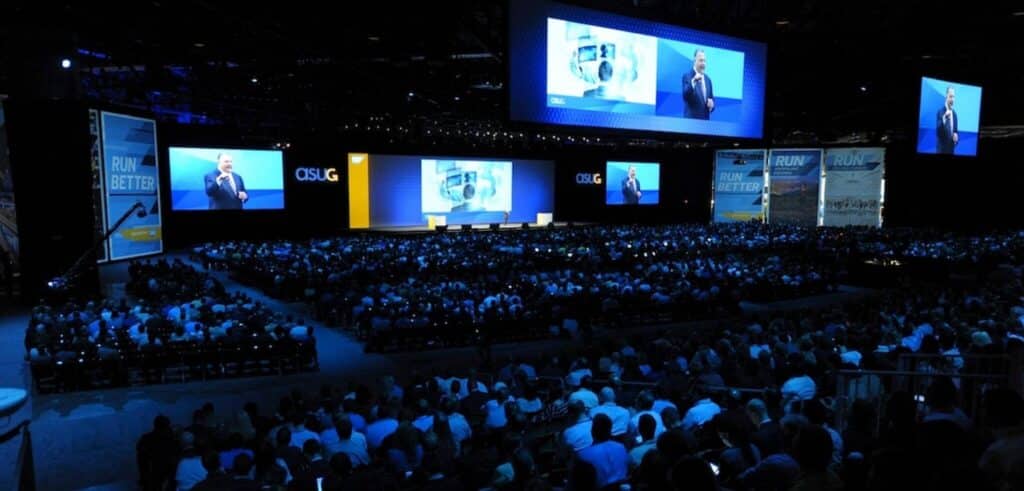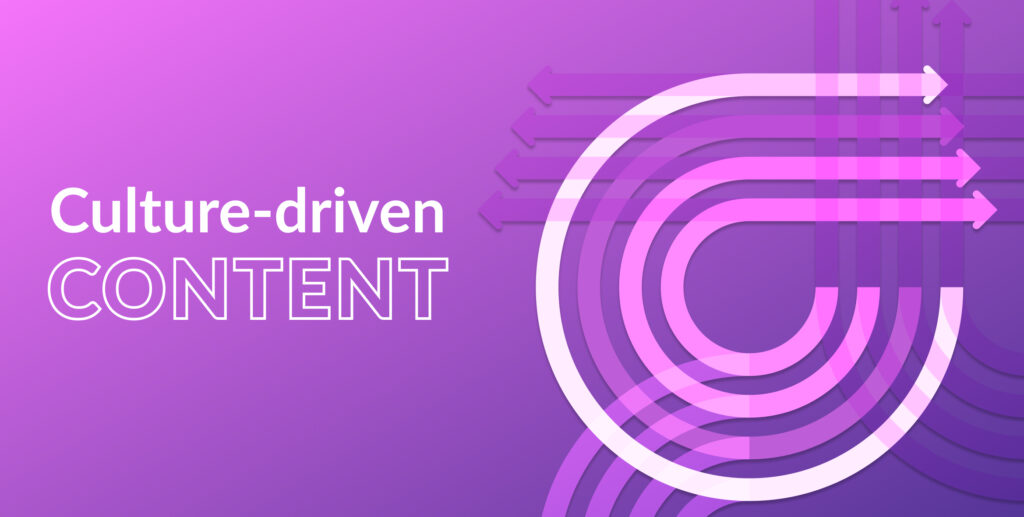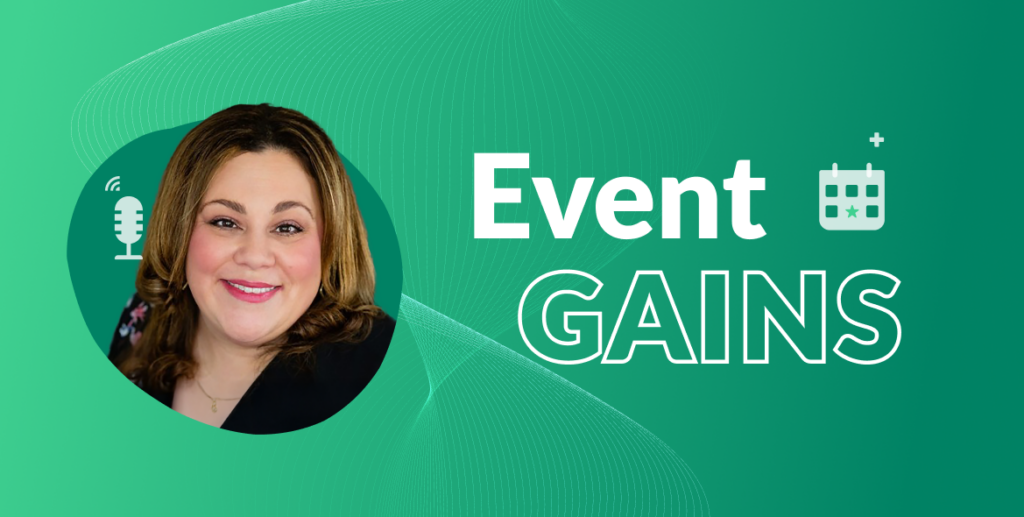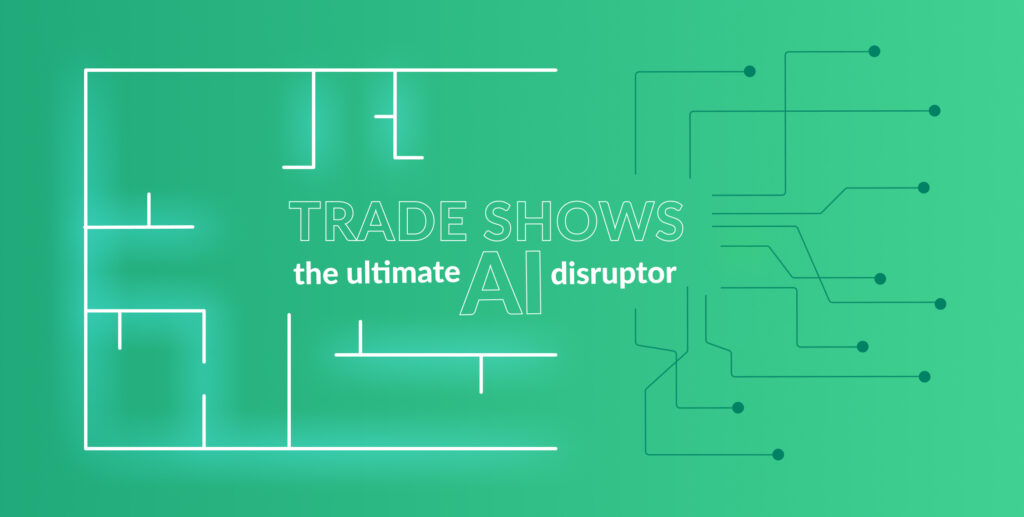When we hear the word “influencer”, most of us think B2C. Your brain might conjure up images of YouTube personalities peddling consumer-grade VPNs, or Instagram stars pushing lifestyle products.
For B2C companies, partnering with an influencer is often a no-brainer. There are tens of thousands of them out there, covering all manner of niches. And with many under management, they can be hired and put to work quickly.
It’s a well-trodden path, making it easier to get buy-in for influencer marketing spend. With B2B, however, things are slightly different.
What is B2B influencer marketing?
Although the core promotional principle is the same, influencers can’t take a photo of your Software-as-a-Service (SaaS) solution in front of the Eifel Tower.
At the same time, the B2B buyer journey has changed significantly in recent years:
- B2B buyers are looking at three-to-five pieces of marketing content before contacting a vendor – and that’s at a minimum.
- Our latest research found tech B2B decision makers are spending more than 70% of the purchase cycle engaging with content before ever reaching out to sales representatives.
This is especially true if you’re selling high-ticket products and services. The buyers you are trying to reach aren’t going to be ready to buy straight away. You have to play the long game, which might impact how you choose to deploy an influencer marketing campaign in a B2B setting.
Can you use influencer marketing in B2B?
Although your approach will likely be different to B2C, it would be a mistake to disregard influencer marketing in a B2B setting.
Consider again the B2B buyer journey. If your target audience is spending considerable amounts of time reading reviews and thought leadership articles, checking specs and Googling for more information, influencer marketing can slot neatly into your educational efforts. After all, they can be a great way to build trust and credibility.
This isn’t just in terms of branded content using your own “internal influencers”, but also those outside your company in what can be perceived as a form of external recognition or support from trusted names in your industry.
So, what’s the best way to approach B2B influencer marketing? Here are seven B2B influencer marketing examples where companies have used it successfully.
7 B2B marketing influencer examples that work
1. SAP – Engaging via live streaming
SAP is a leader in application software with thousands of customers. SAP are no strangers to influencer marketing tactics, working with top corporate executives and industry experts in a variety of ways over the years to expand their reach.
- Approach: SAP invites influencers to industry events to help them increase social engagement, extending their brand awareness.
- Result: At one event in Germany, they invited five influencers to talk about topics including machine learning, data analytics, and IoT. The event was trending in Germany for two days. The influencers in attendance drove 50% of all of the social media mentions about this event, showing B2B can work with influencers just as well as B2C.
There are other examples of how SAP has used influencers at events, too. At SAP Sapphire in Florida, for example, SAP collaborated with 11 influencers.

They livestreamed the talks held at the event for those who couldn’t attend in person. This approach reached between 80,000-100,000 people online via this channel, which also featured an active Q&A.
After the event concluded, SAP reused the content on their blog and linked to that through their social media accounts, extending the long-tail value of this influencer campaign.
2. Bosch Power Tools – Micro-influencer videos for YouTube
B2B influencer selection isn’t all about working with the person who has the biggest following. It’s more important to collaborate with people who are the most relevant to, and trusted by, your target audience.

Bosch Power Tools took advantage of this, turning to micro-influencer marketing to reach their target audience and convince tradespeople to upgrade their tools.
- Approach: Following in the footsteps of B2C brands, Bosch provided trade tools to those who agreed to test them in order to create video reviews.
- Result: These videos were posted on YouTube and linked via social media and placement of reviews in trade publications. The first-hand user videos helped Bosch extend their reach by appealing to people’s desire for hands-on reviews and endorsements.
3. GE – Leveraging Instagram to drive visibility and engagement
GE does a lot of B2C marketing for their washers, dryers, and vacuum cleaners. But the business also has a B2B arm supplying wind turbines, jet engines, and locomotives.
GE is great at taking everyday business and adding a bit of pizzazz. Their Instagram content marketing campaign is proof of this in action.
- Approach: GE worked with six Instagramers. They held tours of their manufacturing facilities and created a hashtag for images and posts – #GEInstaWalk. This idea was easy to implement at very little cost to GE, and the results were stunning.
- Result: The numbers speak for themselves. As a result of the campaign, GE’s Instagram account saw 8 million views and 3,000 new followers.
4. Dell – Influencer podcast co-creation to stand out from the crowd
Dell Technologies created the ‘Trailblazers’ podcast which highlights stories of innovation and disruption with former CNN CEO, Walter Isaacson. Isaacson is known in the tech world for writing the eponymous biography of Steve Jobs in 2011.
- Approach: In Trailblazers, Isaacson tells the stories and history behind the impact of technology on the world of business.
- Result: As a well-known personality, Isaacson has built an audience that sees him as a credible authority on technology. Dell is simply mentioned as the sponsor of the series. Yet, by co-creating a podcast on the impact of digital disruption with a recognised industry expert, Dell was able to boost the credibility, reach, and visibility of its podcast

Podcasts by B2B companies have become more common since Dell introduced Trailblazers. And it’s easy to see why. In Isaacson’s own words: “Sometimes, when you’re creating websites, you’re letting people hop and link all over the place, but a podcast, like a book, basically sits somebody down and says, ‘Let me tell you a story’.”
Bonus example: It doesn’t have to be a podcast series. Content co-creation works well for whitepapers, reports, and any other form of content where you’re sharing expertise and opinion. By partnering with an industry influencer, or another company in the space, you can add further credibility and reach to your content.
5. HubSpot – Using industry experts to build resource centre value
HubSpot, the B2B developer and marketer of software products for inbound marketing and sales, is not new to the game of leveraging influencer marketing. HubSpot has been partnering with experts in sales and marketing niches who contribute to HubSpot’s blog and share their experiences and expertise for years.
- Approach: By targeting experts in their respective fields, the content that ends up on the HubSpot blog is of great value to its readers. This influencer campaign approach bring in fresh content that helps HubSpot continue to engage its audience.
- Result: The added value of working with industry experts is that they will share their content on their own networks. HubSpot is then able to reach a wider audience. In return, these influencers benefit from the huge readership HubSpot has.
Bonus example: LinkedIn also used this approach to help it be seen as a B2B marketing platform. In an effort to change the perception of LinkedIn as just a job search and recruitment tool, the company launched The Sophisticated Marketer’s Guide to LinkedIn, which featured Q&As and interviews with experts to educate marketers and instil trust.
6. Video Fruit – Capitalising on internal ambassadors through guest blogging
Video Fruit – a B2B marketing consultancy that provides software, courses, coaching programs, and tools to help businesses build their email databases – decided to run a guest blogging campaign.
- Approach: Bryan Harris, founder of Video Fruit, was published as a guest blogger on the Okdork blog.
- Result: On the day the post was published, the Video Fruit website saw a 500% increase in page views.
Guest blogging is perhaps one of the most traditional forms of B2B influencer marketing. But it remains a great way of making the most of those already on your team to further your brand’s reach, and can be useful for pulling in visitors that otherwise would not have seen or visited your company site.
7. IBM – Driving engagement on social media through employee advocacy
Employee advocacy-led marketing is a cost-effective way to add extra oomph to your campaigns. In part, this is because employee social networks are typically at least 10-times larger than the social networks of company pages.
No one knows this better than IBM.
- Approach: When launching IBM Verse, IBM pulled in 500 employees for its employee advocacy program. Employees were positioned as social leaders and encouraged to take to LinkedIn to share their brand stories and experiences.
- Result: The campaign drove 50,000 new registrations for IBM Verse in the first two weeks, with IBM reporting many of those came in via the employee advocacy program.
How to use these B2B influencer campaign examples
Incorporating successful B2B influencer marketing campaigns into your strategy requires a thoughtful approach and understanding of your target audience. Leveraging the examples provided can serve as inspiration for your own initiatives.
Here’s a quick guide on how to apply these insights effectively:
Identify industry influencers
- Begin by identifying opinion leaders within your industry. Look for thought leaders, experts, and individuals with a substantial following among your target audience.
- Consider collaborating with those who align with your brand values and resonate with your potential customers.
Choose the right social media platforms
- Select social media platforms where your target audience is most active. Each platform has its own strengths, so tailor your approach accordingly.
- Platforms like LinkedIn, Twitter, and Instagram are popular choices for B2B influencer marketing.
Utilise influencer marketing platforms
- Explore influencer marketing platforms that connect brands with relevant experts, such as Matchmaker for podcasts. These platforms streamline the collaboration process and provide insights into an influencer’s reach, engagement, and authenticity.
- Research and choose the best marketing platform that suits your campaign goals.
Implement employee advocacy programmes
- Encourage employees to become advocates for your brand by creating a social media ambassador programme. Leverage their networks to amplify your message.
- Provide employees with content and guidelines to share on their personal platforms, showcasing the human side of your business.
Create engaging content
- Develop compelling B2B content that aligns with the strengths of each influencer. Whether it’s live streaming, social media marketing, videos, podcasts, or blog posts, tailor the content to resonate with your audience.
- Ensure that the content adds value to your target audience by being informative, entertaining, or inspiring.
Measure and analyse results
- Use analytics tools to measure the impact of your influencer marketing campaign. Track metrics such as reach, engagement, website traffic, and conversions.
- Analyse the performance of each influencer to refine your strategy for future campaigns.
Consider niche influencers
- Don’t focus solely on influencers with massive followings. Micro-influencers who have a smaller but highly engaged audience can be valuable for niche markets.
- Consider working with people like National Geographic photographers whose expertise and content can resonate deeply within specific industry segments.
Explore diverse content formats
- Experiment with various content formats to keep your programme diverse and engaging. This could include podcasts, live streams, guest blogs, or even Instagram takeovers.
Build long-term relationships
- Foster long-term relationships with experts who genuinely align with your brand. Consistent collaboration can lead to increased trust and credibility among your audience.
- Consider establishing an ongoing affiliate or influencer marketing programme to maintain a steady presence in your industry.
By integrating these strategies and learning from successful examples, your brand can effectively leverage the power of influencers to enhance visibility, credibility, and engagement within your target market.
If you need expert guidance or wish to explore influencer marketing further, reach out to reputable B2B content marketing specialists or a specialist B2B influencer marketing agency for tailored assistance.
Making a success of B2B influencer marketing
There you have it – seven B2B influencer marketing examples to use as inspiration. However, it’s worth noting that this list isn’t exhaustive. There are a host of ways B2B tech brands can work with influencers to reach a wider audience.
If you’re looking to get started with B2B influencer marketing or want to expand your existing efforts with other tactics and methods, get in touch at hello@isolinecomms.com.
Like what you just read?
There’s more where that came from. Sign up to our newsletter to get the latest B2B tech news, content marketing insights, tips, tricks, memes, and more, delivered straight into your inbox every month.



